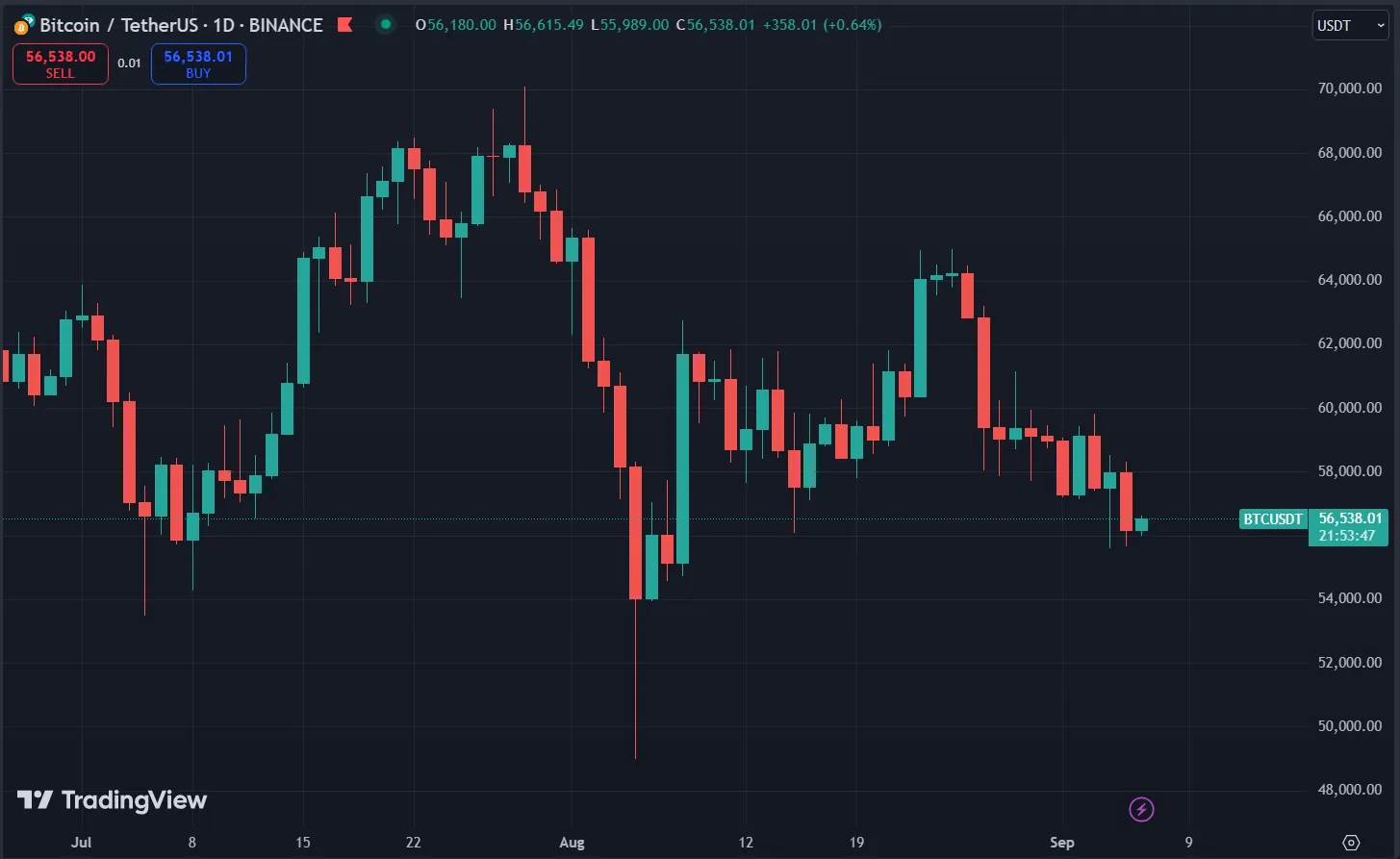As September progresses, Bitcoin (BTC) appears to be following its historical pattern of price declines. Late August closed on a negative note, with recent data indicating waning public interest, as reflected by a drop in Bitcoin-related search volumes on Google Trends. Julio Moreno, head of research at Cryptoquant, provided a relevant analysis, pointing out that the primary driver behind Bitcoin’s price dip is a lack of demand growth. He emphasized that all current valuation metrics signal a bearish market, raising concerns about Bitcoin’s near-term future.
Support Levels and Market Sentiment
Moreno highlighted the significance of certain price levels, particularly the $55,500 mark, which is a key support level based on Onchain trader data. His observation comes amidst a divided market, where pessimistic forecasts clash with glimmers of optimism for potential bullish movements. This contrast underscores the uncertainty in the market as participants weigh the risks against the historically bullish trends often seen in Q4.

Amid the current pessimistic environment, prominent figures in the cryptocurrency community have voiced mixed opinions on Bitcoin’s trajectory. Sentiment across social media platforms, particularly Twitter, has grown notably gloomy, with influential analysts and commentators acknowledging that such negative sentiment could signal a bottom for Bitcoin. Some believe that significant price movements are more likely when market sentiment is overwhelmingly bearish, potentially challenging the prevailing pessimism with an unexpected surge in Bitcoin’s value.
Historical Trends and Q4 Outlook
Despite the present downturn, historical data suggests that Bitcoin often demonstrates resilience as the year’s final quarter approaches. This is frequently attributed to seasonal buying patterns and increased interest in cryptocurrencies. According to Moreno, while Q4 traditionally holds promising seasonal trends, much depends on broader economic conditions and overall market momentum. Investors will be closely monitoring demand metrics and wider market indicators throughout this period, hoping for a return to bullish behavior based on historical precedents.
In summary, Bitcoin’s performance in September faces significant challenges due to declining demand and historical patterns. While pessimism dominates the current discourse, there are still potential signs of optimism, especially with Q4 approaching. Investors must remain cautious yet vigilant, as the inherent unpredictability of cryptocurrency means major shifts can occur at any moment. Monitoring demand trends and key market indicators will be crucial in determining whether Bitcoin can defy historical patterns and set a bullish precedent by the end of 2023.






